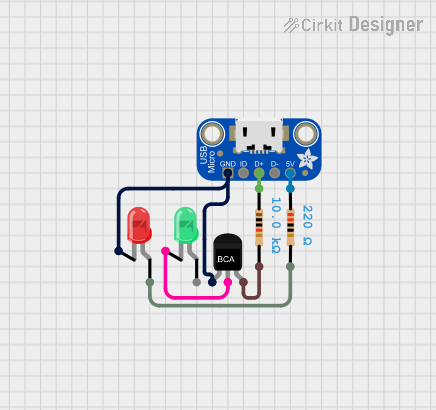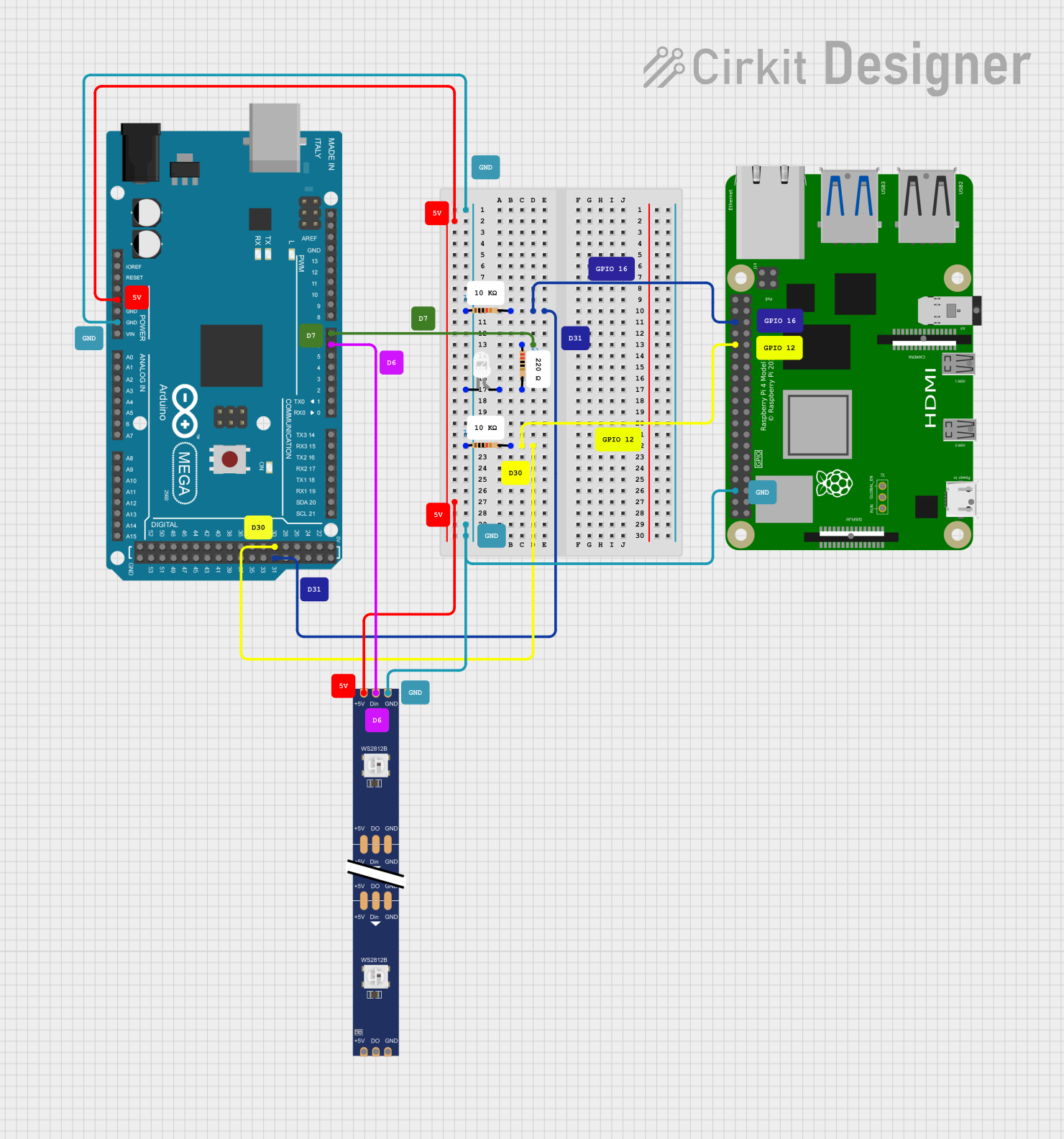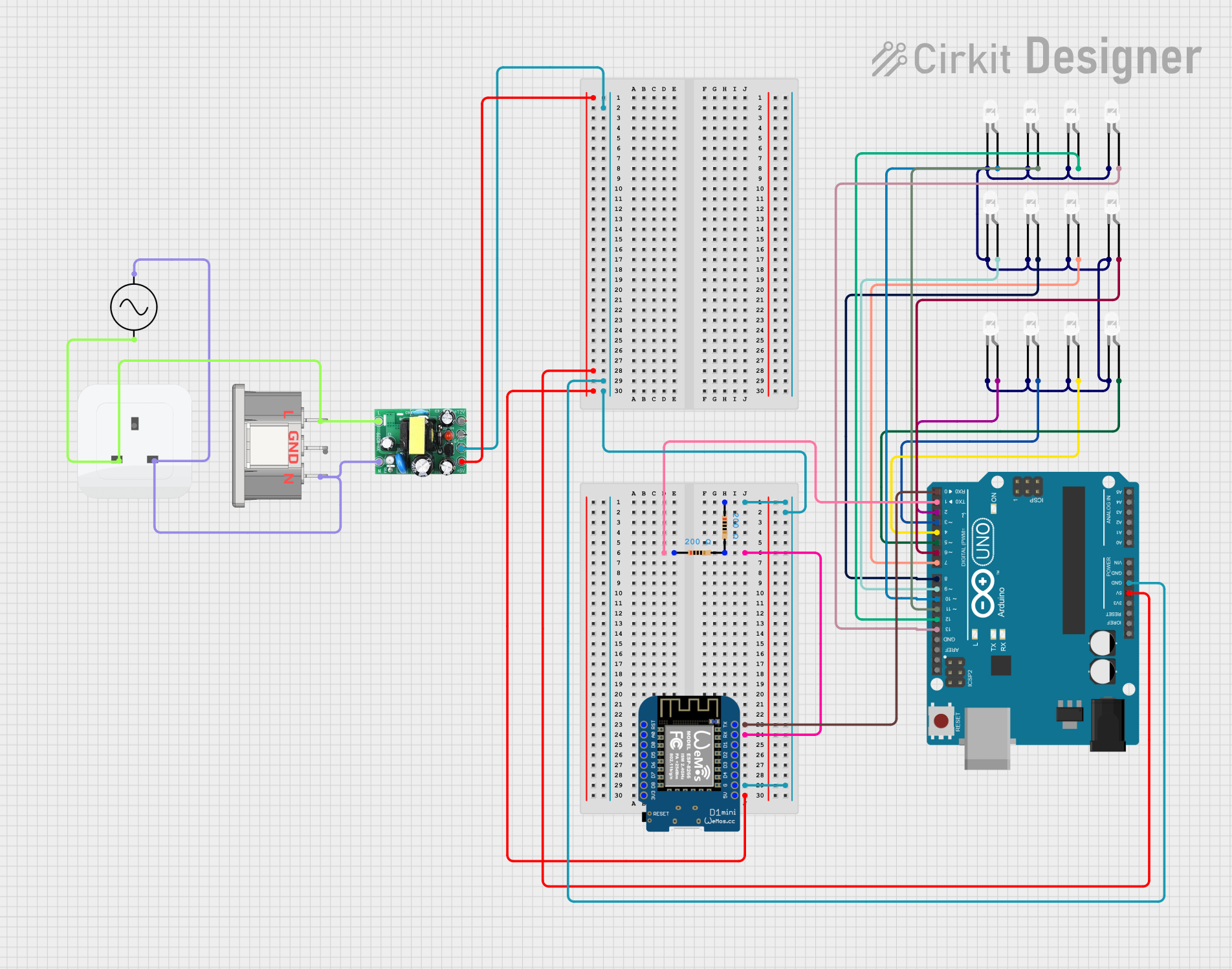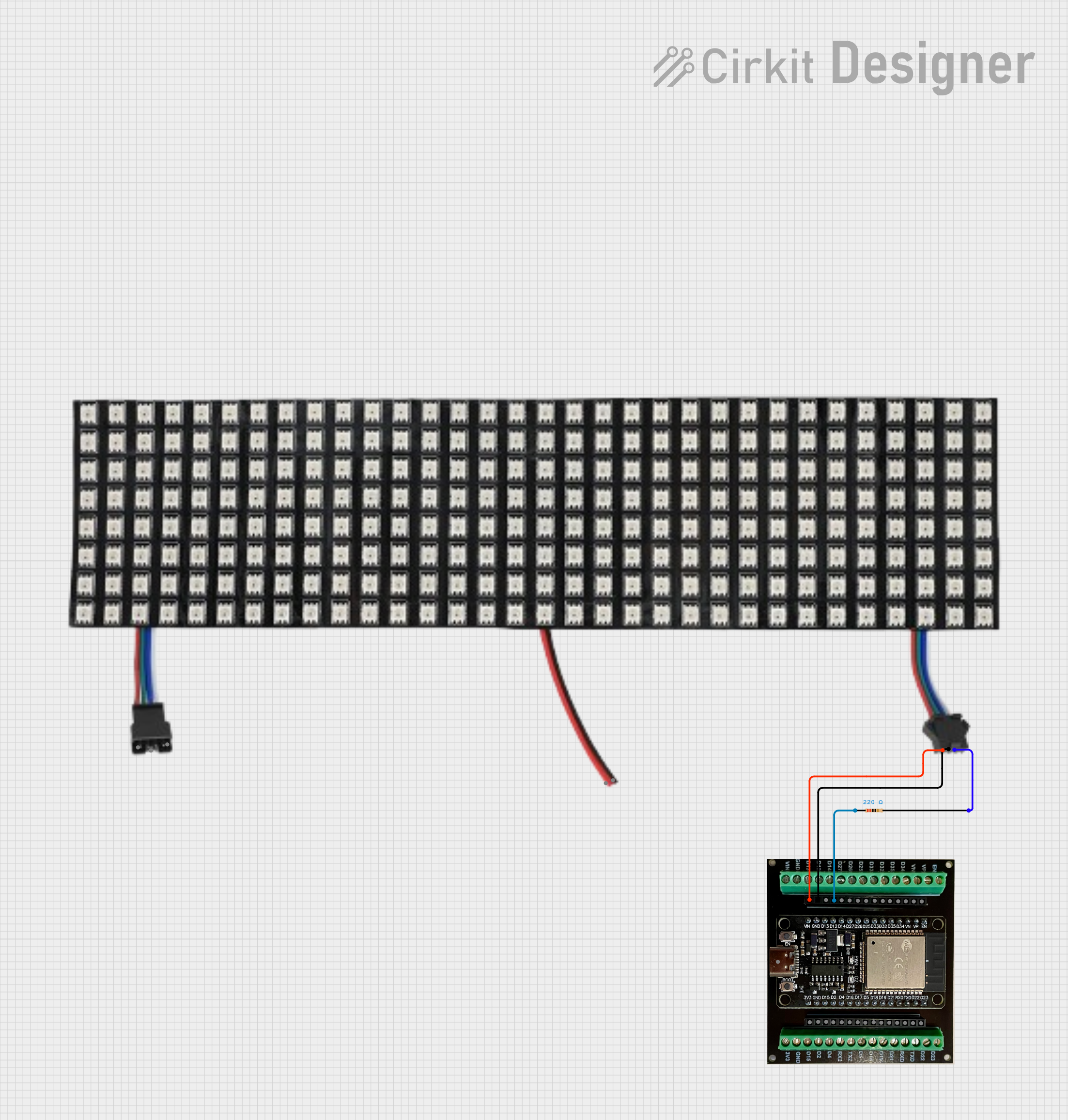
How to Use 3 Watt White Star LED Breakout Board: Examples, Pinouts, and Specs

 Design with 3 Watt White Star LED Breakout Board in Cirkit Designer
Design with 3 Watt White Star LED Breakout Board in Cirkit DesignerIntroduction
The 3 Watt White Star LED Breakout Board by Keyes is a high-power LED module designed for efficient and bright illumination. This breakout board simplifies the integration of a 3 Watt white LED into various projects by providing easy-to-use solder pads or pin headers for power and control connections. Its compact design and high brightness make it ideal for applications such as DIY lighting, photography, architectural lighting, and hobby electronics.
Explore Projects Built with 3 Watt White Star LED Breakout Board

 Open Project in Cirkit Designer
Open Project in Cirkit Designer
 Open Project in Cirkit Designer
Open Project in Cirkit Designer
 Open Project in Cirkit Designer
Open Project in Cirkit Designer
 Open Project in Cirkit Designer
Open Project in Cirkit DesignerExplore Projects Built with 3 Watt White Star LED Breakout Board

 Open Project in Cirkit Designer
Open Project in Cirkit Designer
 Open Project in Cirkit Designer
Open Project in Cirkit Designer
 Open Project in Cirkit Designer
Open Project in Cirkit Designer
 Open Project in Cirkit Designer
Open Project in Cirkit DesignerCommon Applications
- High-intensity lighting for DIY projects
- Flashlights and portable lighting systems
- Accent and decorative lighting
- Photography and video lighting
- Robotics and model illumination
Technical Specifications
Below are the key technical details for the 3 Watt White Star LED Breakout Board:
| Parameter | Value |
|---|---|
| Manufacturer | Keyes |
| Part ID | 3 Watt White Star LED Breakout Board |
| LED Type | High-power white LED |
| Operating Voltage | 3.0V to 3.6V |
| Forward Current | 700mA (typical) |
| Power Rating | 3 Watts |
| Luminous Flux | 200-220 lumens |
| Color Temperature | 6000K-6500K (Cool White) |
| Board Dimensions | 20mm x 20mm |
| Heat Dissipation | Requires external heat sink |
Pin Configuration and Descriptions
The breakout board features two solder pads or pin headers for easy connection:
| Pin | Label | Description |
|---|---|---|
| 1 | + |
Positive terminal for power input |
| 2 | - |
Negative terminal for power input |
Note: Ensure proper polarity when connecting the LED to avoid damage.
Usage Instructions
How to Use the Component in a Circuit
- Power Supply: Use a constant current LED driver or a regulated power supply capable of delivering 3.0V to 3.6V at 700mA. Avoid connecting directly to a voltage source without current regulation.
- Heat Management: Attach the breakout board to a heat sink or metal surface to dissipate heat effectively. This prevents overheating and ensures optimal performance.
- Wiring: Connect the
+and-terminals of the breakout board to the power supply, ensuring correct polarity. - Testing: Gradually increase the current to the LED while monitoring its brightness and temperature.
Important Considerations and Best Practices
- Current Regulation: Always use a constant current driver to prevent overdriving the LED, which can lead to permanent damage.
- Heat Dissipation: The LED generates significant heat during operation. Use thermal paste or adhesive to secure the breakout board to a heat sink.
- Polarity: Double-check the polarity of your connections before powering the LED.
- Avoid Overvoltage: Exceeding the maximum voltage (3.6V) can damage the LED.
Example: Connecting to an Arduino UNO
The 3 Watt White Star LED cannot be powered directly by an Arduino UNO due to its high current requirements. However, you can control it using a transistor or MOSFET as a switch. Below is an example circuit and code:
Circuit Setup
- Connect the
+terminal of the LED to the positive output of a constant current driver. - Connect the
-terminal of the LED to the drain of an N-channel MOSFET (e.g., IRF540N). - Connect the source of the MOSFET to ground.
- Connect the gate of the MOSFET to a PWM-capable pin on the Arduino (e.g., Pin 9) through a 220-ohm resistor.
- Connect the ground of the Arduino to the ground of the power supply.
Arduino Code
// Example code to control the brightness of the 3 Watt White Star LED
// using PWM on an Arduino UNO.
const int ledPin = 9; // PWM pin connected to the MOSFET gate
void setup() {
pinMode(ledPin, OUTPUT); // Set the LED pin as an output
}
void loop() {
// Gradually increase brightness
for (int brightness = 0; brightness <= 255; brightness++) {
analogWrite(ledPin, brightness); // Set PWM duty cycle
delay(10); // Small delay for smooth transition
}
// Gradually decrease brightness
for (int brightness = 255; brightness >= 0; brightness--) {
analogWrite(ledPin, brightness); // Set PWM duty cycle
delay(10); // Small delay for smooth transition
}
}
Note: Ensure the MOSFET you use can handle the current and voltage requirements of the LED.
Troubleshooting and FAQs
Common Issues and Solutions
LED Does Not Light Up
- Cause: Incorrect polarity or insufficient power supply.
- Solution: Verify the polarity of the connections and ensure the power supply meets the voltage and current requirements.
LED Flickers
- Cause: Unstable power supply or loose connections.
- Solution: Use a stable constant current driver and check all connections.
LED Overheats
- Cause: Insufficient heat dissipation.
- Solution: Attach the breakout board to a heat sink with thermal paste or adhesive.
Low Brightness
- Cause: Insufficient current or incorrect PWM settings.
- Solution: Ensure the current is set to 700mA and verify the PWM duty cycle.
FAQs
Q: Can I power the LED directly from a 5V source?
A: No, the LED requires a constant current driver with a voltage range of 3.0V to 3.6V. Directly connecting it to a 5V source can damage the LED.
Q: Do I need a heat sink for short-term use?
A: Yes, even for short-term use, the LED generates significant heat. A heat sink is recommended to prevent damage.
Q: Can I control the LED brightness without an Arduino?
A: Yes, you can use a PWM-capable LED driver or a 555 timer circuit to control brightness.
Q: What is the lifespan of the LED?
A: The LED has a typical lifespan of 50,000 hours when operated within its specified parameters.